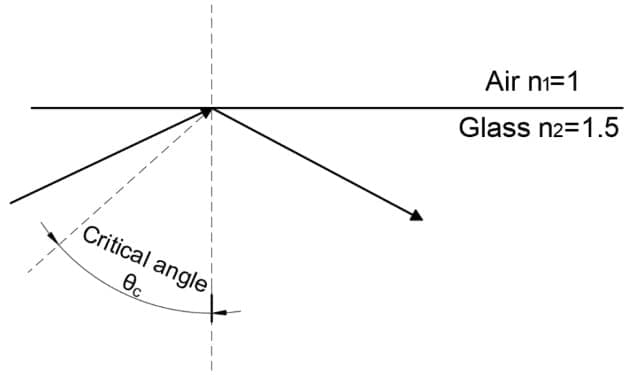New Android banking trojan Datzbro targets seniors via fake Facebook groups, enabling device takeover and financial fraud.



Hackers are actively exploiting a critical vulnerability (CVE-2025–32463) in the sudo package that enables the execution of commands with root-level privileges on Linux operating systems.
The U.S. Cybersecurity and Infrastructure Security Agency (CISA) has added this vulnerability to its Known Exploited Vulnerabilities (KEV) catalog, describing it as “an inclusion of functionality from untrusted control sphere.”
CISA has given federal agencies until October 20 to apply the official mitigations or discontinue the use of sudo.

A new phishing and malware distribution toolkit called MatrixPDF allows attackers to convert ordinary PDF files into interactive lures that bypass email security and redirect victims to credential theft or malware downloads.
The new tool was spotted by Varonis researchers, who told BleepingComputer that MatrixPDF was first spotted on a cybercrime forum. The seller also uses Telegram as an additional means of interacting with buyers.
The developer of MatrixPDF promotes the tool as a phishing simulation and blackteaming tool. However, Varonis researcher Daniel Kelley told BleepingComputer that it was first seen being offered on cybercrime forums.

AI scientists are emerging computational systems that serve as collaborative partners in discovery. These systems remain difficult to build because they are bespoke, tied to rigid workflows, and lack shared environments that unify tools, data, and analyses into a common ecosystem. In omics, unified ecosystems have transformed research by enabling interoperability, reuse, and community-driven development; AI scientists require comparable infrastructure. We present ToolUniverse, an ecosystem for building AI scientists from any language or reasoning model, whether open or closed. TOOLUNIVERSE standardizes how AI scientists identify and call tools, integrating more than 600 machine learning models, datasets, APIs, and scientific packages for data analysis, knowledge retrieval, and experimental design. It automatically refines tool interfaces for correct use by AI scientists, creates new tools from natural language descriptions, iteratively optimizes tool specifications, and composes tools into agentic workflows. In a case study of hypercholesterolemia, ToolUniverse was used to create an AI scientist to identify a potent analog of a drug with favorable predicted properties. The open-source ToolUniverse is available at https://aiscientist.tools.
Get GameMaker! https://opr.as/GM-mattbatwings.
Patreon: https://www.patreon.com/mattbatwings.
Discord: https://discord.gg/V5KFaF63mV (Competition details are in # comp-info)
My socials: https://linktr.ee/mattbatwings.
My texture pack: https://modrinth.com/resourcepack/mattpack.
World Download: (JAVA 1.21.4) https://www.planetminecraft.com/project/upgrading-builds/
Original Game of Life: https://youtu.be/D8FMiFswZN8?si=7eVZszzhMip0IYJN
Original Tic Tac Toe: https://youtu.be/f_KnGOmNHE0?si=9sB3lRbuJSB6lSxG
Want to get more involved in the logical redstone community?
Learn Logical Redstone! https://youtube.com/playlist?list=PL5LiOvrbVo8keeEWRZVaHfprU4zQTCsV4
Open Redstone Engineers (ORE): https://openredstone.org/
Music (in order):
LitKidBeats — GOOD VIBES https://youtu.be/WRBRA3ZZ1cM?si=GRsDLhAJfvcRI_Iv.
Lukrembo — Rose https://youtu.be/XIhyti2Qa74?si=rmOo5hIMqi0lveHi.
Harris Heller — Trendy https://open.spotify.com/track/5Iyyvfv9vPW7duF3BFuGAh.
Harris Heller — Call Me Daddy https://open.spotify.com/track/7G0KJtPB7nEqjwARGiHsQM
massobeats — aromatic https://youtu.be/vpgK_3TJI_A?si=R4cmTgiwygrehsXi.
Lukrembo — Green Symphony https://youtu.be/qtbl_7cSLMI?si=Kww8YEwYW3ifcLjg.
Lukrembo — Jay https://youtu.be/1zmJ_4kGYUU?si=_OXkCGSqYBrceIWS
Lukrembo — Afternoon https://youtu.be/tayfXQfFDZE?si=JdseBiOdWi44B9I_
MOST TRACKS CAN BE FOUND HERE — https://freetouse.com/music

This is one of the Royal Institute of Philosophy’s 15-minute Philosophy Briefings, a series in which eminent philosophers provide their own view of a key philosophical topic, in straightforward and accessible language.
Each one is designed to be a resource for anyone who wants to know more about these questions, whether you are covering them at A-level, teaching them at A-level, studying Philosophy at university, or are simply curious to know more.
David Chalmers, Professor of Philosophy and Neural Science at New York University and co-director of NYU’s Center for Mind, Brain, and Consciousness, looks at whether there exist philosophical zombies.
More users will be able to use advanced and personalized AI in their daily lives, taking one more step further towards AI democratization

